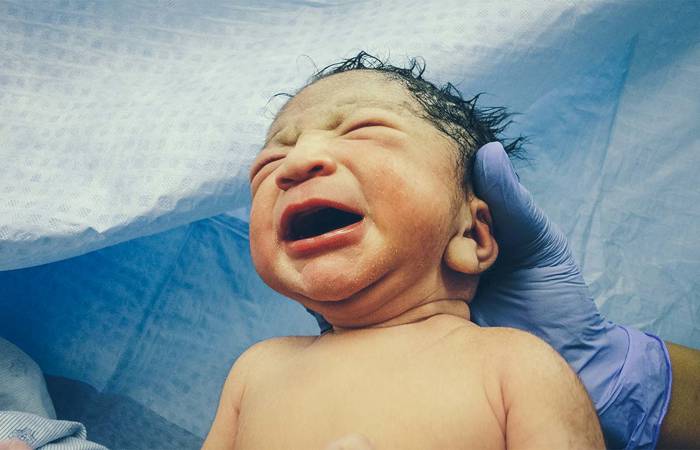Like what you see?
Sign up to receive more free parenting advice.
Thank you for subscribing to our newsletter!
Lifestyle

Credit: iStock.com/FatCamera
Every woman’s birth experience is different. For some it is a positive and empowering event, for others it may raise some normal anxiety and for some a genuine overwhelming fear.
While it is entirely normal to feel some stress at what is a truly life-changing moment surrounded by uncertainty, descriptions of the pain and the possible complications of childbirth contribute to some mothers’ feelings of dread.
That fear can cause an immense amount of stress and anxiety and have an impact on how the birthing mother copes. This stress can have flow on effects from the pregnancy, to whether the mother experiences a positive birth and feels empowered as a parent during those first few months.
This is where hypnobirthing comes in, with its aim to identify, acknowledge and overcome those fears through a series of techniques that will, hopefully, lead to a positive birth.
“There is a lot of ‘woo woo’ associated with the word hypno and it can be a real turn off,” admits Melissa Spilsted, Director of Hypnobirthing Australia who started her organisation 13 years ago and it’s now Australia’s leading childbirth education course delivered by over 350 practitioners with interest from overseas.
“In my opinion, it’s a fancy word for a positive birth and used to describe the use of self-hypnosis during birth.”
While there are varying hypnobirthing programs available to expectant parents, Melissa says that the courses offered at Hypnobirthing Australia are unique.
“Our main program, the Positive Birth Program, is an evidenced-based, down to earth, engaging childbirth education, designed so parents can find the content relatable and understandable,” she says.
“Materials are easily accessed by parents, both in class content but also online resources for parents to take home with them including access to an app.
“It’s important to be able to have access to post-course materials.
“It’s okay to feel great during the course, but we don’t want our expectant parents to then go home and forget everything they’ve learnt.
“Instead, we want our parents to put the learnings into practice during their pregnancy, which results in a positive, relaxed pregnancy which is beneficial to everyone, including the unborn child, but also when labour kicks in, what they’ve learnt becomes second nature.”
Hypnobirthing Australia also has a Positive Caesarean Birth Program, Indigenous Birth Program and Practitioner Training Course.
Benefits of Hypnobirthing
The Australian authors of a 2016 study credited the high use of epidural blocks for pain relief as the contributing factor in rising rates of medical interventions during birth.
For birthing mothers who opted for self-hypnosis as a form of pain relief, they were more likely to have a vaginal birth without surgical or mechanical assistance.
Reduced rates of augmentation in labour, length of second stage of labour, perineal trauma, caesarean births and the need for resuscitation of the newborn were also identified.
In 2019, after 10 years of almost no change to the antenatal education curriculum, Bunbury Hospital in country WA introduced the suite of Hypnobirthing Australia’s Positive Birthing antenatal classes.
“Based on research we reviewed, we found that if you can implement an independent, comprehensive, complimentary therapy antenatal education program into hospitals, you will decrease birth interventions and improve satisfaction with birth,” says Kasey Biggar, Registered Nurse and Registered Midwife at Bunbury Hospital.
There is a lot of ‘woo woo’ associated with the word hypno and it can be a real turn off. In my opinion, it’s a fancy word for a positive birth and used to describe the use of self-hypnosis during birth.Melissa Spilsted
Stay up to date with the latest news and articles from First Five Years
Thank you for subscribing to our newsletter!
Kasey began to independently compare the outcomes of birthing mothers who attended the Positive Birth Program and those who did not take up the program.
“We collated our results in a quality improvement project for the first year this program was running and found a decrease in all medical interventions,” she says.
Specifically, she found a 32 per cent decrease in the use of epidurals, a 40 per cent decrease in the use of morphine, a 51 per cent reduction in non-elective caesarean sections, a 15 per cent reduction in inductions and a 22 per cent increase in vaginal births.
“The most significant benefit to me has been the emotional one,” she highlights.
“The program makes such a difference to those women whose pregnancy or birth may take an unexpected turn or whose labour is a true endurance event or those who require medical intervention by providing them and their birth partners with a whole toolbox of tools to navigate their birth and be empowered to work with their team for what they feel is important to them and their baby.”
The WA Country Health Service program was extended via telehealth to families during COVID public health restrictions, an option that the majority of parents-to-be said they preferred as they enjoyed not having to leave their loungerooms and it was less intimidating to ask questions via screen than in a room full of strangers.
The WA Country Health Service continues the telehealth option, in addition, to the face-to-face option when COVID restrictions are lifted.
Kasey explains that the benefits extend to the newborn baby and to the new parents.
“If the birthing mother is calm during birth, she isn’t activating a fight/flight/freeze/appease response which means her stress hormones will be low and she will continue to provide blood and oxygen to the placenta and therefore the baby.”
Melissa adds that with less interventions during birth, mothers have a faster recovery time which proves helpful when looking after a newborn.
Evidenced-based techniques
“We believe women have the power and inner knowledge to birth, but fear can stop us from trusting our instincts,” says Melissa.
“When we recognise and let go of unnecessary fears, we arm ourselves with knowledge, tools, support and preparation.
“Then, we are putting ourselves in the box seat for a more positive and empowered birth.”
She adds that anyone can do the course regardless of their pregnancy risks or birthing plans, including planned caesarean births.
The Positive Birth Program equips parents with techniques to help establish a positive mindset and feel empowered through the birth.
The first technique is breathing which helps physically, emotionally and mentally.
“When we are fearful, in pain and scared, we automatically hold our breath or start breathing through our mouth,” Melissa explains.
“This triggers the sympathetic part of our nervous system which causes our muscles to tense and stops the blood going to our uterus and our baby.”
Then there are relaxation techniques, where one is self-hypnosis.
“Self-hypnosis isn’t the only technique, but it’s the ‘secret sauce’ that differentiates hypnobirthing from other birthing programs,” Melissa says.
“It enables us, at will, to click into a very calm state quite quickly which you really need when a contraction happens.
“Self-hypnosis can help the mother to release important hormones during the birth like oxytocin and endorphins which are said to be 40 times more powerful than morphine for pain relief.
“Self-hypnosis is also useful during pregnancy as there is research which shows that anxiety and stress during pregnancy can affect an unborn baby.”
Other techniques like acupressure, massage, visualisation, movement and positioning are also taught.
“Feedback from participants of the program commonly says that feeling empowered during the birth leads them to feeling empowered as a parent in those first few months and beyond,” Melissa adds.







